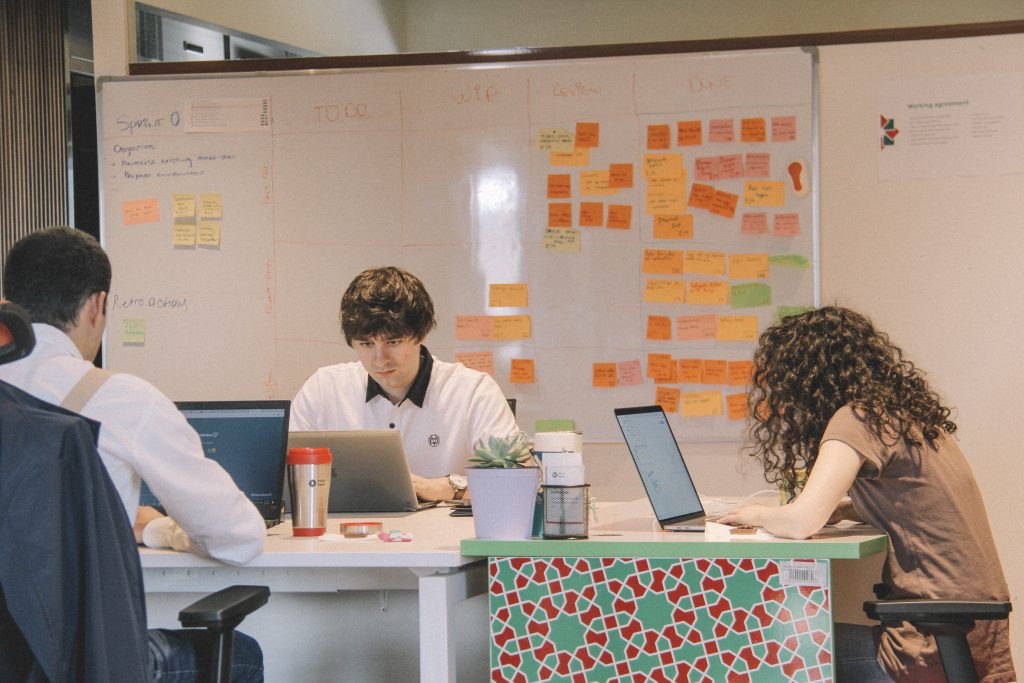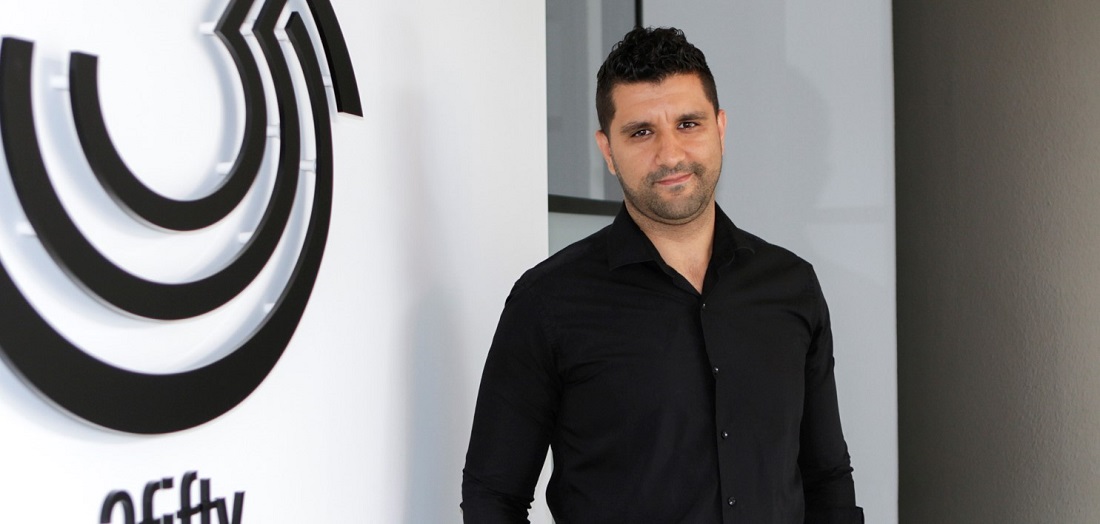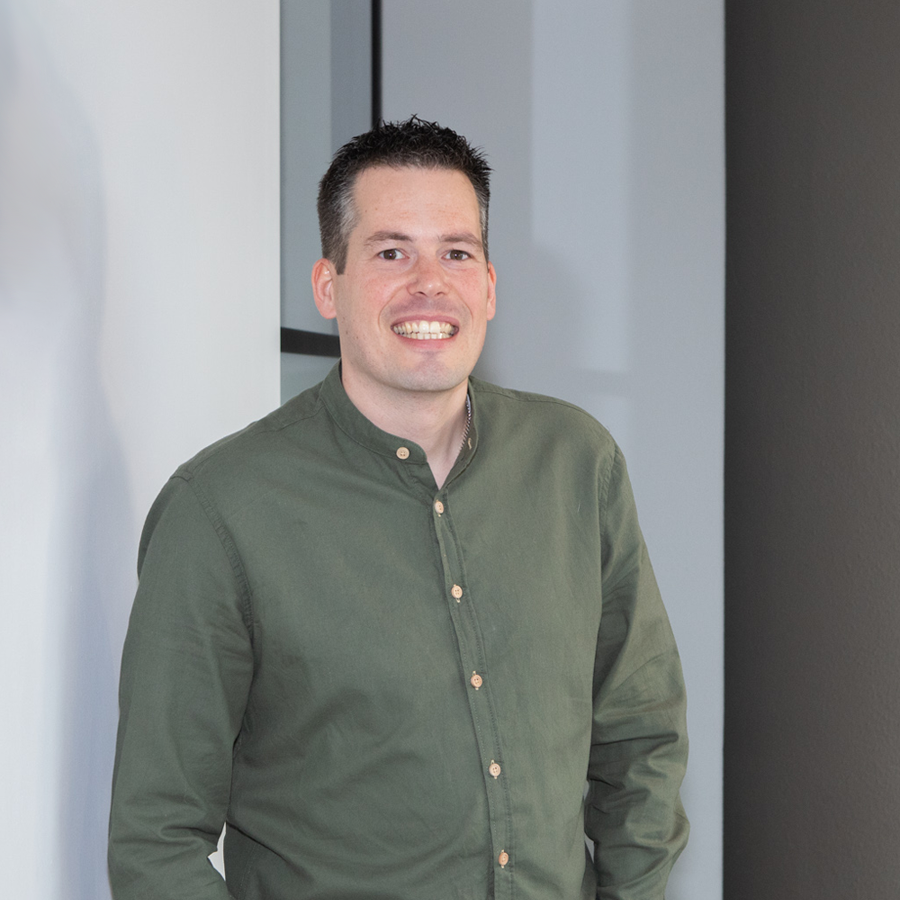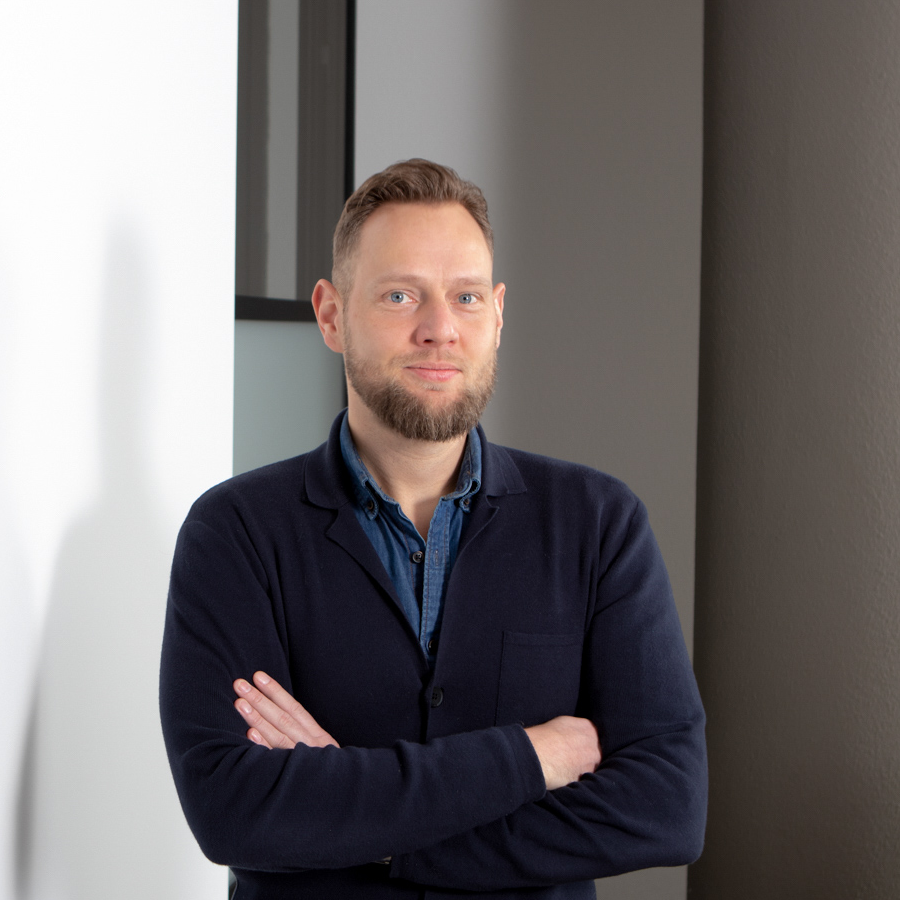For the English version click here
Met enthousiasme en de juiste begeleiding kan ik teams laten excelleren en waarde toevoegen aan de organisatie.
Er is veel vraag naar stabiele cloudoplossingen en het liefst worden deze oplossingen morgen opgeleverd. Zo ook bij een internationale High-tech Enterprise klant. Om aan deze vraag te voldoen is er een Cloud Center of Excellence (CCoE) opgezet om een multi-cloud platform te realiseren en beschikbaar te stellen. Daarvoor zijn de eerste stappen gezet met het Microsoft Consulting Services-team. Mourad was ingehuurd door Microsoft en als Lead Azure Solutions Architect onderdeel van het CCoE. In deze blog vertelt hij over zijn ervaring bij de klant.
Anderhalf jaar geleden startten ze het project om een veilig multi-cloud platform te realiseren met behulp van een CCoE.
Het bouwen van cloudoplossingen
Beeld je eens in: In de organisatie is de IT-afdeling erg druk en heeft geen tijd voor (extra) vragen, procedures voor changes zijn vaak tijdrovend. Er is een tekort aan cloudkennis. Het leveren van nieuwe oplossingen en functionaliteiten voor de business duurt te lang. De applicatieteams zijn afhankelijk van de IT-afdeling om hen te voorzien van IT-resources. Je kunt je voorstellen dat zo’n stroperig proces innovatie in de weg staat. Om innovatie en productiviteit te stimuleren, kan een overstap naar cloudoplossingen worden gemaakt. Echter daarvoor moet je wel de juiste cloudkennis in huis hebben. De afhankelijkheid van de IT-afdeling zorgt voor beperkingen.
Praktijkvoorbeeld: het applicatieteam wil een nieuwe oplossing bouwen. Ze hebben voor deze oplossing extra IT-resources nodig. Denk aan extra capaciteit in de vorm van rekenkracht of opslag. En eventueel ondersteuning bij de transitie naar de Cloud waarbij het applicatieteam weinig tot geen kennis en/of ervaring heeft met de Cloud. Normaal gesproken vragen ze dit aan bij het IT-team. Er gaat veel tijd overheen omdat; 1) de IT-afdeling er geen tijd of prioriteit voor heeft en 2) het proces voor het opschalen binnen een datacenter standaard lang duurt en vaak kostbaar is. Na goedkeuring van de IT-afdeling kan het applicatieteam pas aan de slag. En wat gebeurt er als tientallen of honderden applicatieteams hetzelfde op een gecontroleerde manier willen doen? Ik hoor je denken… dit kan sneller en efficiënter! Het antwoord op deze situatie is: Het opzetten van een CCoE.
Introductie Cloud Center of Excellence
Het CCoE van deze klant heeft een duidelijke visie, namelijk:
“Het bieden van een flexibel en betrouwbaar (multi)cloud- en automatiseringsplatform om een versnelde en duurzame adoptie van de cloud te realiseren, en de mogelijkheden en voordelen van de cloud te maximaliseren en tegelijkertijd risico’s te verminderen om groei van de organisatie te ondersteunen.”
Een CCoE is een uitvoerend- en adviesorgaan wat bestaat uit een aantal teams, waaronder:
- Customer Team
- Ondersteunen van DevOps-teams die applicaties of oplossingen in de cloud bouwen
- Aandragen van best practices, oplossingspatronen en hergebruik van gecertificeerde ‘cloud-producten’
- Platform Team
- Het platform continu ontwikkelen en bijhouden met cloudinnovaties
- Nieuwe cloudmogelijkheden beschikbaar stellen ter ondersteuning van het creëren van waarde voor de business
- Product Team
- Bouwen en beheren van gecertificeerde ‘Producten’
- DevOps-teams helpen om maximale waarde en snelheid te maken tijdens de levering aan de business
- Architecture & Governance Team
- Adviseren over cloudpatronen en best practices
- Richtlijnen voor Platformgebruik definiëren en beschikbaar stellen
- Security Team
- Adviseren over cloudrisico’s en compliance
- Valideren oplossingen en producten tegen het Risk Control Framework
- Adoption Team
- Focus op cloudadoptie voor DevOps-teams en het evangeliseren van het CCoE
- Het opzetten van een community om hergebruik en samenwerking te bevorderen
- Communiceren over de voortgang en succesverhalen van cloud onboarding
Deze teams bevatten cloud engineers, (Enterprise) architecten, security engineers en adoptiespecialisten. Bij deze klant gaat het om +/-30 personen. Sinds begin 2020 zijn er ook GCP teams bij gekomen die zich bezig houden met het opzetten van een hybride Google Cloud Platform.
De standaard DevOps-rollen zoals Product Owner en Scrum Master zijn ook onderdeel van het CCoE. Aanvullend heeft het CCoE ook een Agile coach aangesteld.
Kort gezegd: het CCoE is een bron van cloudkennis en leverancier van een veilige en stabiele cloudplatform waar DevOps-teams sneller, veiliger en flexibeler cloudoplossingen door kunnen realiseren en meer toegevoegde waarde kunnen leveren aan de business.
Eén van de doelen die het CCoE van deze klant wil verwezenlijken is: een multi-cloud platform beschikbaar stellen, voorzien van de nodige connectiviteit met on-premises datacenters op een veilige manier en DevOps-teams begeleiden bij hun reis naar de cloudplatformen.
Opzetten van een veilig cloudplatform
In Q1 van 2019 is de klant gestart met het traject om het Azure Cloud Platform op te zetten. Ze begonnen met het inrichten van een hybride Azure cloudomgeving. De klant wilde over naar de hybride cloudomgeving op een veilige en verantwoorde manier. De eerste stap was het inregelen van ExpressRoute-verbindingen tussen de Datacenters van de klant en de Azure Datacenter regio’s wereldwijd. Naast connectiviteit is er ook veel aandacht besteed aan Governance en Security. Denk hierbij aan policies, identity & security, monitoring & reporting, etc. Daarvoor heeft het CCoE richtlijnen voor gebruik opgesteld.
Om de omgeving veilig te maken en te houden is er ook een ‘Risk Control Framework’ opgesteld. Dit Framework maakt de potentiële risico’s inzichtelijk en geeft aan welke controls gebruikt moeten worden om deze risico’s te mitigeren en op welke manier. De richtlijnen voor de beschikbaarheid van het Platform, support modellen en adoptie zijn vastgesteld in het ‘Service Management Framework’. Deze twee raamwerken zijn de fundering voor een stabiel en veilig cloudplatform.
Op het moment dat het cloudplatform gereed was voor gebruik, was de volgende, logische stap het starten van de ‘Cloud Journey’ van elk DevOps-team. Elk DevOps-team heeft in dezen haar argumenten om wel of niet naar de Cloud te willen of moeten. Daar hoort vaak ook een milestone-planning bij met deadlines en budgetten. Om deze DevOps-teams te helpen aan een vliegende start heeft het Customerteam een Cloud Journey georganiseerd met een Cloud onboarding process als extra begeleiding. De DevOps teams krijgen initieel een Cloud Awareness-sessie waarin ze leren hoe de cloud werkt en wat het voor hen kan betekenen. Daarna volgen zij het Cloud onboarding process. Hieronder vertelt Mourad vanuit zijn rol wat dat inhoudt.
Mourad’s rol binnen het CCoE
Mourad is als Lead Azure Solutions Architect onderdeel van het Customerteam binnen het CCoE. Het Customerteam is verantwoordelijk voor het begeleiden van de DevOps-teams vanuit een technisch en ‘way of working’-perspectief. Ze hebben geregeld overleg over nieuwe cloudoplossingen. Wanneer een DevOps-team een nieuwe functionaliteit of oplossing wil maken, helpen zij hen met het opstellen van een solution design (architectuurplaat). Vervolgens zetten zij samen de eerste stappen richting deze nieuwe functionaliteit of oplossing. Naast het ophalen van business requirements en het uittekenen van een target-architectuur, bouwen ze ook een PoC. Er komen ook niet-technische taken bij, denk aan een stuk politiek bedrijven, op een Agile manier het project managen, cost management-sessies inplannen en nog veel meer. Mourad is naast zijn deelname in het Customerteam ook actief lid van het Cloud Architecture Board en een aantal Competence Centers (Cloud, CI/CD, etc.).
Hoe beleeft Mourad dit project? Mourad Dahmani, 3fifty: “Deze omgeving en het project zijn zo uitdagend en vooruitstrevend. In mijn functie heb ik verschillende petten op en is er enorm veel te doen. Ik pak zaken op rondom manieren van werken (Scrum/SAFe), architectuur en technologie (Azure Platform). Wat ik ook heel leuk vind, is dat ik de DevOps-teams help met de nieuwste Microsofttechnologie in de praktijk toe te passen binnen een complexe, internationale omgeving met strenge beveiligingseisen en richtlijnen. Dat is heel gaaf!”
“De inzet van DevOps zorgt voor sneller opleveren van diensten en producten. Doordat in het team vertegenwoordigers van verschillende a“De diverse werkzaamheden, verantwoordelijkheden en de super inspirerende omgeving maken dit project enorm uitdagend en vooruitstrevend”.fdelingen zitten, denk hierbij aan security en productmanagers, kunnen we snel keuzes maken.

Agile transformation = op organisatieniveau veranderen
Voorheen werkte de klant voornamelijk volgens de Scrum-methodiek met een kleinschalige focus, dus vanuit het teamperspectief proberen om waarde toe te voegen. Kort na de start van het CCoE is ook de manier van werken veranderd. De klant koos ervoor om een Agile transformation voor de gehele organisatie te realiseren. Hoofdzakelijk is deze keuze gemaakt zodat er niet meer op teamniveau, maar op een programma-/portfolioniveau, dus gezamenlijk, waarde toegevoegd wordt.
De methodiek waarmee deze klant de Agile Transformation in gang heeft gezet heet: Scaled Agile Framework (SAFe).
Beperkingen omzetten in kansen
Dean Leffingwell BRON is de bedenker van SAFe. Hij zag dat Scrum, een populaire methodiek vanuit de Agile theorie, wat beperkingen had voor grotere (ontwikkel)organisaties. Wanneer deze organisatie (200+ medewerkers) vanuit het Scrum-gedachtegoed kleine teams opzet, ontstaat er al gauw een wirwar aan Scrum-teams. Er ontbreekt een helicopterview, structuur in waar deze teams aan werken. SAFe zorgt ervoor dat deze teams ‘aligned’ zijn en geeft structuur.
In de praktijk is deze structuur nodig om ordeloosheid te voorkomen. Het is gemakkelijk om de structuur te verliezen wanneer je met veel (lees honderden) teams werkt.
SAFe is gebaseerd op Scrum, alle voordelen van deze methode zijn in SAFe verwerkt. Denk aan de kort-cyclische sprint backlogs, de Scrummaster en de Product Owner. Het moet wel wendbaar en flexibel zijn, zonder chaotisch te worden. SAFe implementeert vervolgens de “Team of Teams”, een soort Masterteam dat als een trein met wagons de teams naar de juiste bestemming brengt. Dit wordt de Agile Release Train genoemd. Daarnaast introduceert SAFe ook een ‘Sprint of Sprints’, welke een “Program Increment” genoemd wordt.
Er valt nog veel meer te vertellen over de SAFe-theorie, de essentie ligt echter bij de cadans van de wagons (teams) en de Program Increments. De combinatie van Agile, Lean, Scrum en DevOps maken de SAFe methode een waardevolle methode om te gebruiken. Als je meer wilt weten over (Azure) DevOps, geef je dan op voor één van onze trainingen over Azure DevOps.
“Mijn enthousiasme zorgt er voor dat mensen zich gemotiveerd voelen en zich eigenaar gaan voelen van wat ze opleveren. Op deze manier creëer je echt een toegevoegde waarde voor de klant en waarderen ze de input”.
Bouwen, coachen en verbinden
In het team heeft Mourad verschillende rollen. Zo is hij onder andere buddy/coach, architect en verbinder. Mourad Dahmani, 3fifty: “Wanneer je in zo’n grote organisatie en team binnenkomt, is het altijd even de kat uit de boom kijken. Net als wanneer je op vakantie bent. Je moet even acclimatiseren en het team moet ook even wennen. Na een tijdje ben je gewend aan de temperatuur en het ritme. Op een geleidelijke manier heb ik alle teamleden leren kennen. Van nature ben ik een verbinder en probeer ik van alle individuen een goed team te maken, dat echt samenwerkt en waarde toevoegt.
Door mijn passie voor IT ben ik enthousiast en nieuwsgierig. Mijn enthousiasme zorgt ervoor dat ik mensen meekrijg en hen goed kan motiveren. Daardoor voelen zij zich eigenaar van hetgeen zij maken en voegen zij echt waarde toe. Voor zichzelf, het team en de organisatie. Dat vind ik mooi om te zien en het geeft mij een lading aan nieuwe energie en motivatie.”
Nieuwsgierig naar werken in de cloud?
Ben jij nieuwsgierig naar werken in de cloud? Neem gerust eens contact met ons op. Je kunt een email sturen naar marketing@3fifty.eu. We gaan graag met je in gesprek.
Nota bene: Vanwege het strenge privacybeleid van onze klant, noemen we deze in dit verhaal niet bij naam.

DevOps Teams can excel and add value to the organization with the right guidance and motivation.
The demand for stable cloud solutions is high and preferably these solutions are delivered tomorrow. This is also the case with an international High-tech Enterprise customer. To meet this demand, a Cloud Center of Excellence (CCoE) has been set up to realize a multi-cloud platform. The first steps have been taken with the Microsoft Consulting Services team. Mourad Dahmani works at 3fifty. He is hired by Microsoft and part of the CCoE as Lead Azure Solutions Architect. In this blog he you will learn more about his experience with the customer and this project.
A year and a half ago they started the project to realize a secure multi-cloud platform using a CCoE.
Building cloud solutions
Envision this: The IT department in the organization is very busy and does not have time for (extra) questions. Procedures for changes are often time-consuming. There is a shortage of cloud knowledge. Delivering new solutions and functionalities for the business takes too long. The application teams depend on the IT department to provide them with IT resources. You can imagine that such a slow process stands in the way of innovation. To stimulate innovation and productivity a switch to cloud solutions can be made. However, you must have the right cloud knowledge in-house to do this. The dependence on the IT department creates limitations.
Example: the application team wants to build a new solution. They need additional IT resources for this solution. Think of extra capacity in the form of computing power or storage. Normally, they request this from the IT team. It takes a lot of time because; 1) the IT department has no time or priority for it and 2) the process for scaling up within a data center is by default long and often costly. The application team can only get started after approval from the IT department. I can hear you thinking … this can be done faster! The answer to this situation is: Setting up a CCoE.
Introduction Cloud Center of Excellence
The CCoE of this client has a clear vision, namely:
“Providing a flexible and reliable (multi) cloud and automation platform to achieve accelerated and sustainable adoption of the cloud, and to maximize the possibilities and benefits of the cloud, while reducing risks to support growth of the organization. ”
A CCoE is a cloud executive and advisory body that consists of a number of teams, including:
- Customer Team
- Supporting DevOps teams building applications or solutions in the cloud
- Propose best practices, solution patterns and reuse of certified “cloud products”
- Platform Team
- Continuously develop and update the platform with cloud innovations
- Make new cloud capabilities available to support business value creation
- Product Team
- Building and managing certified “Products”
- DevOps teams help to create maximum value and speed during delivery to the business
- Architecture & Governance Team
- Advising on cloud patterns and best practices
- Define and make available guidelines for Platform usage
- Security Team
- Advising on cloud risks and compliance
- Validate solutions and products against the Risk Control Framework
- Adoption Team
- Focus on cloud adoption for DevOps teams and evangelizing the CCoE
- Setting up a community to promote reuse and collaboration
- Communicate about cloud onboarding progress and success stories
These teams include cloud engineers, (Enterprise) architects, security engineers and adoption specialists. Since the beginning of 2020, GCP teams have also been added to set up a hybrid Google Cloud Platform.
The standard DevOps roles such as Product Owner and Scrum Master are also part of the CCoE. In addition, the CCoE has also appointed an Agile coach.
In short, the CCoE is a source of cloud knowledge and a provider of a secure and stable cloud platform through which DevOps teams can realize cloud solutions faster, more securely and more flexibly and deliver more added value to the business.
One of the goals that the CCoE of this customer wants to achieve is: making a multi-cloud platform available, providing the necessary connectivity with on-premises data centers in a secure manner and guiding DevOps teams on their journey to the cloud platforms.
Setting up a secure cloud platform
In Q1 of 2019, the customer started the process to set up the Azure Cloud Platform. They started with setting up a hybrid Azure cloud environment. The customer wanted to switch to the hybrid cloud environment in a safe and responsible manner. The first step was to set up ExpressRoute connections between the customer Datacenters and the Azure Datacenter regions worldwide. In addition to connectivity, much attention has also been paid to Governance and Security. This includes policies, identity & security, monitoring & reporting, etc.
The CCoE has drawn up guidelines for use for this. A ‘Risk Control Framework’ has also been drawn up to make and keep the environment safe. This Framework provides insight into the potential risks and indicates which controls must be used to mitigate these risks and how. The guidelines for the availability of the Platform, support models and adoption are established in the “Service Management Framework”. These two frameworks are the foundation for a stable and secure Cloud Platform.
Once the cloud platform was ready for use, the next logical step was to start the “Cloud Journey” of each DevOps team. Every DevOps team has its arguments for whether or not they want or need to go to the Cloud. This often includes milestone planning with deadlines and budgets. To help these DevOps teams get off to a flying start, the Customer team has organized a Cloud Journey with a Cloud onboarding process as additional guidance. The DevOps teams initially receive a Cloud Awareness session in which they learn how the cloud works and what it can mean for them. Then they follow the Cloud onboarding process. Mourad explains below what that entails from his role.
Mourad’s role within the CCoE
Mourad is a Lead Azure Solutions Architect and part of the Customer team within the CCoE. The Customer Team is responsible for guiding the DevOps teams from a technical and “way of work” perspective. They regularly consult the teams on new cloud solutions. When a DevOps team wants to create a new functionality or solution, they help them draw up a solution design. Furthermore they take the first steps together towards this new functionality or solution. In addition to retrieving business requirements and drawing up a target architecture, they also build a PoC. There are also non-technical tasks, such as politics, managing the project in an Agile way, planning cost management sessions and much more. In addition to his participation in the Customer Team, Mourad is also an active member of the Cloud Architecture Board and a number of Competence Centers (Cloud, CI / CD, etc.).
How does Mourad experience this project? Mourad Dahmani, 3fifty: “This environment and the project are so challenging and progressive. In my position I wear different hats and there is a lot to do. I deal with matters related to working methods (Scrum / SAFe), architecture and technology (Azure Platform). What I also really like is that I help the DevOps teams to apply the latest Microsoft technology in practice within a complex, international environment with strict security requirements and guidelines. That’s really cool! ”
“The various activities, responsibilities and the super inspiring environment make this project extremely challenging and progressive”.

Agile transformation = change at the organizational level
Previously, the customer mainly worked according to the Scrum method with a small-scale focus, so trying to add value from a team perspective. Shortly after the start of the CCoE, the way of working also changed. The customer chose to realize an Agile transformation for the entire organization. This choice was mainly made so that value is no longer added at the team level, but at a program / portfolio level, ie jointly.
The method used by this client to initiate the Agile Transformation is called: Scaled Agile Framework (SAFe).
Transforming restrictions into opportunities
Dean Leffingwell SOURCE is the creator of SAFe. He saw that Scrum, a popular methodology from the Agile theory, had some limitations for larger (development) organizations. When this organization (200+ employees) sets up small teams based on the Scrum philosophy, a jumble of Scrum teams quickly develops. There is no helicopter view, structure in which these teams work. SAFe ensures that these teams are “aligned” and provides structure.
In practice, this structure is necessary to prevent disorder. It’s easy to lose structure when working with many (read hundreds) teams.
SAFe is based on Scrum, all advantages of this method have been incorporated into SAFe. Think of the short-cyclical sprint backlogs, the Scrummaster and the Product Owner. It must be agile and flexible, without becoming chaotic. SAFe then implements the “Team of Teams”, a kind of master team that takes the teams to the right destination like a train with wagons. This is called the Agile Release Train. In addition, SAFe also introduces a “Sprint of Sprints”, which is called a “Program Increment”.
There is much more to tell about the SAFe theory, such as concepts such as Lean Portfolio Management and Value Stream Mapping, but the essence lies with the cadence of the wagons (teams) and the Program Increments. The combination of Agile, Lean, Scrum and DevOps make the SAFe method a valuable method to use. If you want to know more about (Azure) DevOps, sign up for one of our training regarding Azure DevOps.
“My enthusiasm makes people feel motivated and take ownership of what they deliver. This way you create real added value for the customer and they appreciate the input”.
Build, coach and connect
Mourad has different roles in the team. He is, for example, a buddy / coach, architect and connector. Mourad Dahmani, 3fifty: “When you enter such a large organization and team, it is always a matter of taking the plunge. Just like when you are on vacation. You have to acclimatize, and the team also has to get used to it. After a while you will get used to the temperature and the rhythm. I gradually got to know all the team members. By nature, I am a connector and I try to make a good team of all individuals that really works together and adds value. My passion for IT makes me enthusiastic and curious. My enthusiasm ensures that I get people on board and can motivate them well. As a result, they feel the ownership of what they create and/or do and they really add value. For themselves, the team and the organization. I like to see that and it charges me with new energy and motivation every time again.”. ”
Are you curious about working with the cloud?
Feel free to contact us. You can send an email to marketing@3fifty.eu. We would be happy to talk to you.
Please note: Due to our client’s strict privacy policy, we do not call this story by name.


